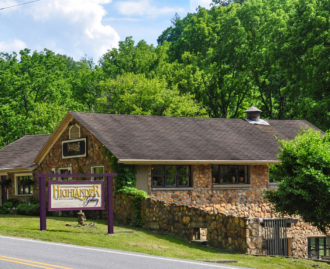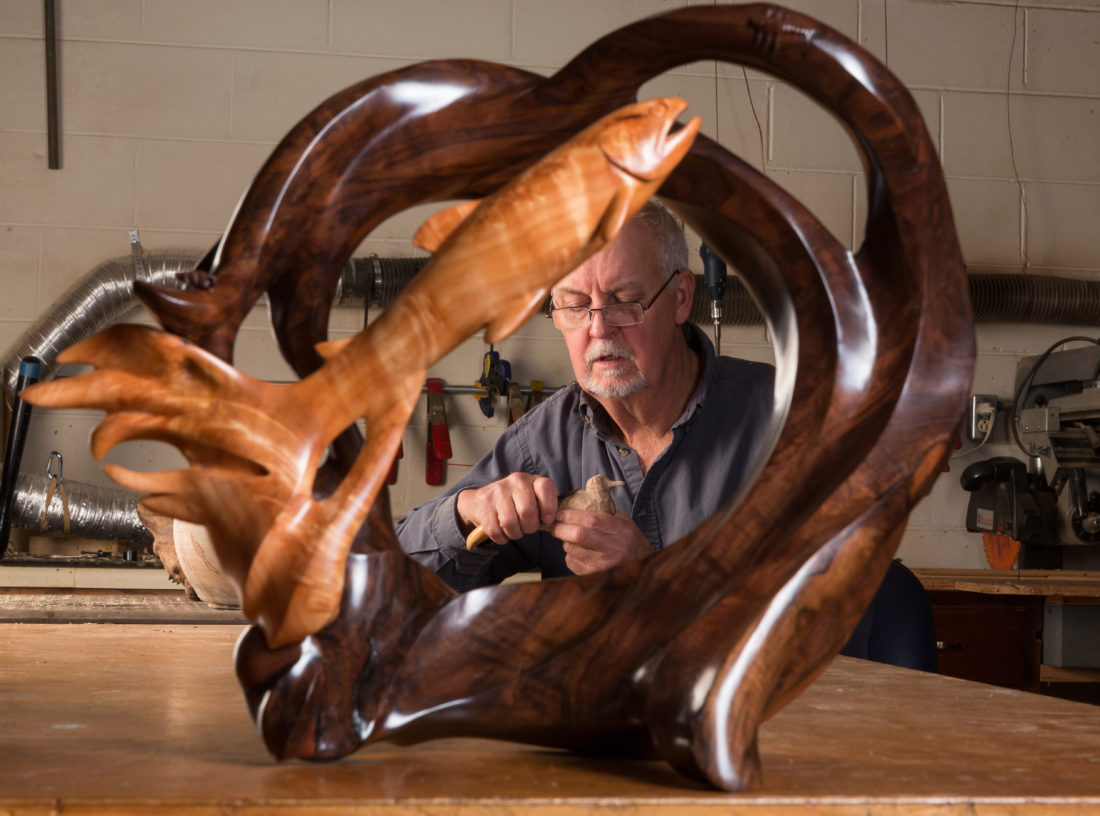The best-known trails in Western North Carolina lead explorers to views that take their breath away: the panoramic mountain bald of Max Patch on the Appalachian Trail, for example, or the cascading Upper Falls along the trails at Graveyard Fields. The Blue Ridge Craft Trails have a similar aim in mind — even if the sights are considerably smaller scale.
Established in 2017 by the Blue Ridge National Heritage Area Partnership, the project seeks to help tourists find their way to the many craft artisans spread throughout WNC. Printed materials, a new website (BlueRidgeCraftTrails.com) and regional marketing all direct visitors to take drivable routes that connect craft destinations.
While the initiative has so far been limited to pilot efforts in Cherokee, Clay and Henderson counties, the plan is for the trails eventually to reach all 25 counties in the heritage area. Thanks to $125,000 in new grant funding from the Appalachian Regional Commission and Community Foundation of Western North Carolina, says Angie Chandler, the region’s High Country is next on the list for craft tourism development and its projected economic benefits.
“Some of our most isolated rural counties are out in the far west and up in the northwest corner of the state, and so we wanted to go outward and come in,” says Chandler, executive director of the BRNHA. “They get touched first, because sometimes they feel like they’re the last.”
More on the map
The craft trails grew out of the partnership’s market research, conducted together with Appalachian State University and Asheville-based Magellan Strategy Group, on how to reach younger audiences. Chandler explains that many respondents already had an interest in craft, but not to the exclusion of other activities.
That insight led the BRNHA to focus on the concept of itineraries, joining multiple craft attractions with other recreational opportunities such as cooking classes or craft breweries. A sample itinerary for Cherokee County begins with a jaunt along the River Walk and Canoe Trails in Murphy, while one for Hayesville in Clay County mentions the town’s summer bluegrass and old-time concert series.
“You combine all that and then add the element of the craft to that — it really makes for a nice package,” Chandler says. “We hope that by promoting it that way, we’ll not only help Western North Carolina in general but specifically bring more attention to the artists as well, because they will very much be a part of that packaging.”

This more integrated approach to marketing the region, Chandler continues, is a logical extension of the BRNHA’s work. Beyond crafts, she says, the partnership is also tasked with preserving and promoting natural, musical, agricultural and Cherokee heritage assets.
Although definitive data on the program’s effectiveness isn’t yet available — the Clay and Cherokee pilots wrapped up in late spring, while the third test run in Henderson County is scheduled to conclude by early December — Chandler says her organization has seen increased engagement on its craft-related social media posts. More extensive marketing of the trails is planned over the next year in conjunction with county tourism organizations, she adds, and artist surveys will be conducted at the end of each season to gather feedback.
Anecdotally, artists involved in the program report mixed results. Furniture maker Jo Kilmer, who owns Spirit Tall in Murphy, says that she hasn’t yet received any additional business from the trails but has gotten very positive responses when informing her customers about them. “So far, it is the first time they have heard about it. I believe it just takes a little bit of time to get the word out there,” she says.
In contrast, Clay County-based woodworker Joe Waldroup notes that increasingly more of his customers are familiar with the trails. “This often leads to more interest and conversation about the work that I do,” he says. “Many times customers will take a second look at a piece that may have caught their eye. Sometimes that’s what it takes to make a sale.”
Making Hayesville
The biggest success for the craft trails to date may be in Hayesville, Chandler says. Local arts supporters, she explains, have leaned into the project with additional signage and posters that help visitors find their way between destinations.
Sandy Zimmerman, board chair for Small Town Main Street/Historic Hayesville, says the trails lined up with the community’s recent work to enliven its main square and develop a barn quilt trail as public art. “A lot of this has evolved in the last couple of years, and that’s why we felt this would be a really good project to focus on these things,” she says.
This summer, Zimmerman says, her organization’s museum and art studio saw more than 600 visitors, a 40% increase over the same period in 2018. Sales of hand-painted barn quilt blocks, which run $150-$300 each and are a major fundraiser for downtown revitalization, are up by roughly 30%.
“The barn quilts have brought in at least $20,000. That’s good for a little town of 377 people!” Zimmerman says. “And our county population is between 10,000 and 11,000, so we’re pretty small over here.”
One Hayesville artist says that the promise of the Blue Ridge Craft Trails was the pivotal factor for taking her work public. Lee Holland and her partner, David Dick, launched Sweetwater Gallery & Studio in November 2018 after attending local listening sessions about the project and learning how their idea might fit in.
“We had toyed with the idea of opening a business for some time; however, we only decided to move forward with the idea after hearing about the plan to develop the BRCT,” Holland says. “We feel privileged to belong, without cost, to an association backed by Fortune 500 staff and advertisement, having our gallery’s name listed among other credible businesses in the three westernmost North Carolina counties, and receiving press and magazine exposure along with being listed on the BRCT website.”
Stay a while
Hayesville is also an example of how the driving-oriented craft trails can still lead to serendipitous pedestrian discoveries. Tourists may arrive by car, but the town’s compact arrangement around a central square allows people to park in one location and take in the sights — both on and off the trail — by foot.
“Right now, whether it’s fortunate or unfortunate, the way folks are getting around in our rural communities is by automobile,” says Chandler. “We encourage people to park their car and to walk in these small towns and get the flavor and the history of what it’s like to be a local there, and to enjoy the quaintness and to just enjoy all they have to offer.”
Moving forward, Chandler hopes to keep visitor numbers up while reducing the impact of vehicles by developing group bus tours along the craft trails. She says similar initiatives have been successful for the Blue Ridge Music Trails, another BRNHA project.
Regardless of how people set out to find WNC’s crafts, Chandler says, the trails are one way to keep those traditions alive for future generations. “Our long-term goal is to build a stronger network across the region for craft artists and help to further preserve our craft assets,” she explains. “By calling attention to them and raising them up as something very important and specific, that also plays a role to ensure that they are preserved.”



Before you comment
The comments section is here to provide a platform for civil dialogue on the issues we face together as a local community. Xpress is committed to offering this platform for all voices, but when the tone of the discussion gets nasty or strays off topic, we believe many people choose not to participate. Xpress editors are determined to moderate comments to ensure a constructive interchange is maintained. All comments judged not to be in keeping with the spirit of civil discourse will be removed and repeat violators will be banned. See here for our terms of service. Thank you for being part of this effort to promote respectful discussion.